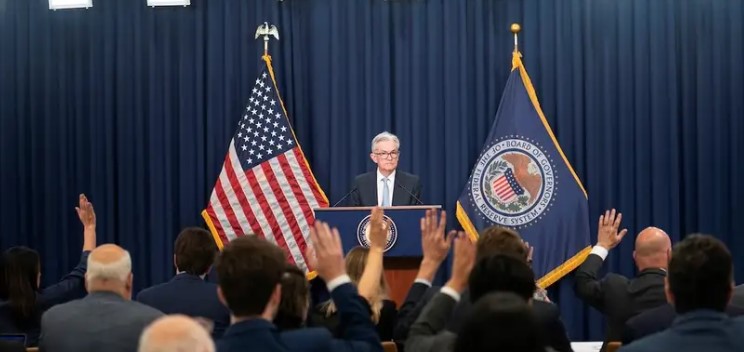Monetary policy in the United States is controlled by The Federal Reserve. The Federal Reserve (Fed) controls the money supply through its three “tools”, open market operations, reserve requirements, and the discount rate. The Fed uses its tools to target the Federal Funds Rate, which is the rate commercial banks borrow and lend their excess reserves to each other overnight. The Fed meets eight times a year to set the target interest rate.
On Wednesday the 22nd, the Fed concluded a two-day meeting announcing another quarter-percentage-point interest rate increase. This will now bring the benchmark Federal Funds rate between 4.75% and 5%, the highest level since September 2007. This marked the ninth consecutive rate increase in the past year, to tame inflation.
It was a very delicate decision, as Fed Chairman Jerome Powell hinted that this increase could be the last increase for the time being. Powell said that the U.S. banking system is “sound and resilient” although the central bank needs to strengthen supervision and regulation of the financial sector after the collapse of several banks this month. When questioned further, Powell said the Fed “considered” a rate pause due to the recent banking crisis. However, economic data has come in too strong, and the Fed is very persistent in its actions to bring inflation down to 2%. Powell said that “we have a long way to go, and the ride will likely be bumpy”.
Whether the Fed would increase the Federal Funds Rate has been a debated topic due to the recent banking turmoil beginning with the collapse of Silicon Valley Bank (SVB). Many have criticized the Fed in the past two weeks, saying the hikes have been hurting the working class. In this meeting, Powell defended the actions of the Fed, saying inflation will hurt more if left untreated. Powell’s goal stands to contract the economy, reduce hiring, and slow economic growth to reduce inflation levels.
Leading up to the decision, there seemed to be three possible outcomes. The Fed could begin to cut rates, signaling the issues in the markets are more significant than inflation; seemingly admitting they had been too eager in their past increases. Or the more likely scenarios, either a rate pause or a rate hike. Either way, markets could perceive this as negative. A pause would signal severe underlying economic issues that were caused by the rapid rate hikes and stress on banks. A rate hike could be perceived as a relentless attempt to battle inflation.
In the press conference on Wednesday, Jerome Powell answered many questions about their quarter-percentage-point raise. A big takeaway was the chairman’s language. In past meetings, they have forecasted “ongoing rate hikes”, however, the new language has turned to “may and some” hike(s) in the future, depending on economic data. Future decisions will be taken on a meeting-by-meeting basis. The Fed indicated that rates could pause by year end, around 5.1%. Powell stated, “The question will be how long this period will be sustained,” referring to the current tightening of the economy.
In sum, the Fed expressed their main concern is still bringing inflation down to their 2% goal. The broad market indexes rebounded this morning with investors perceiving the potential slow-down in rate increases as good news. The Fed will be waiting to see how much the recent events slow the economy, which could help their efforts to cool the economic growth. Powell did not provide clarity on whether a soft landing is still possible.
Schenley Capital, Inc. 417 Walnut Street Suite 200, Sewickley, PA 15143, (412)-749-9256 (info@www.schenleycapital.com)
